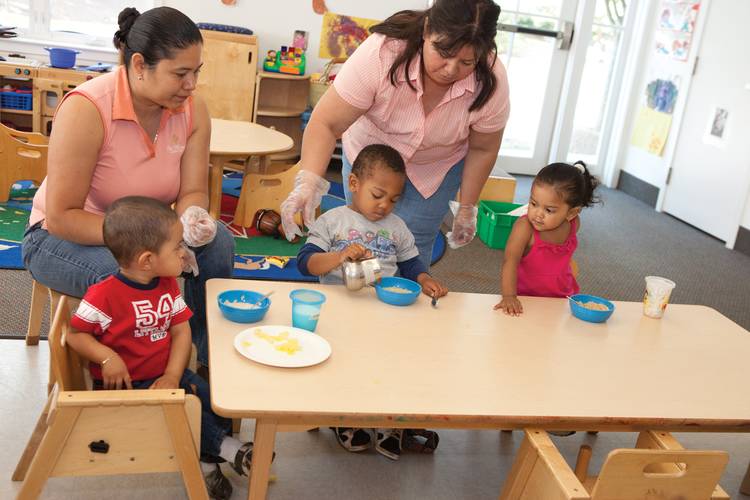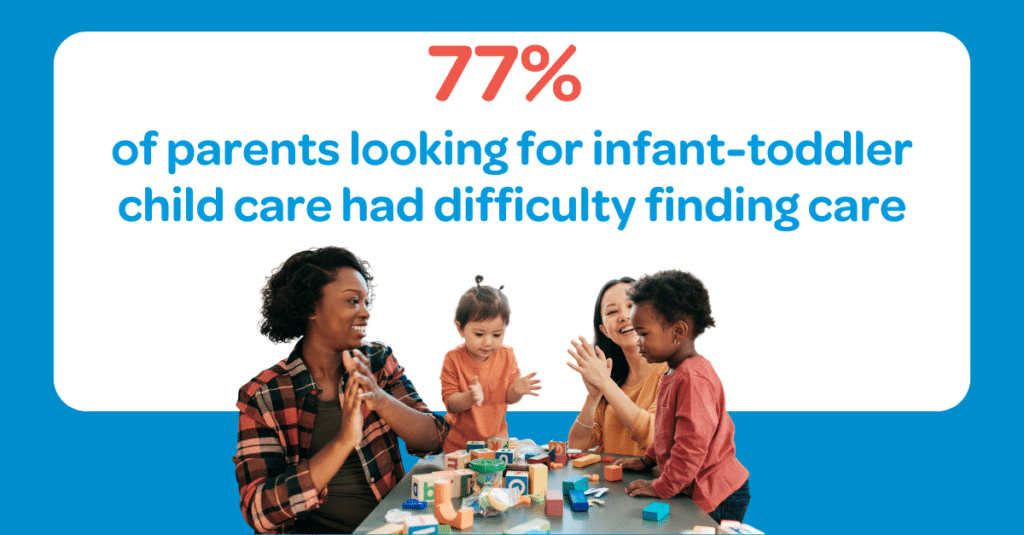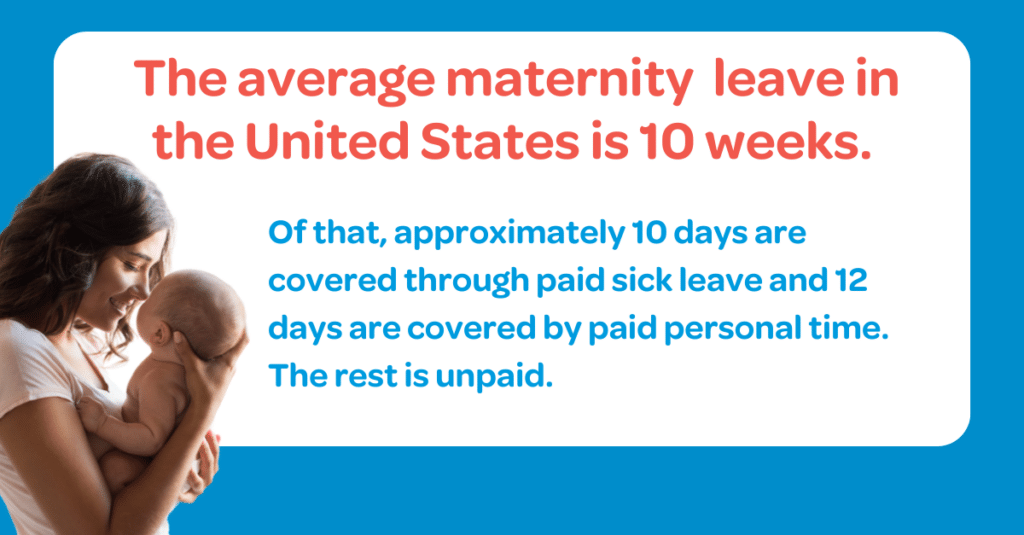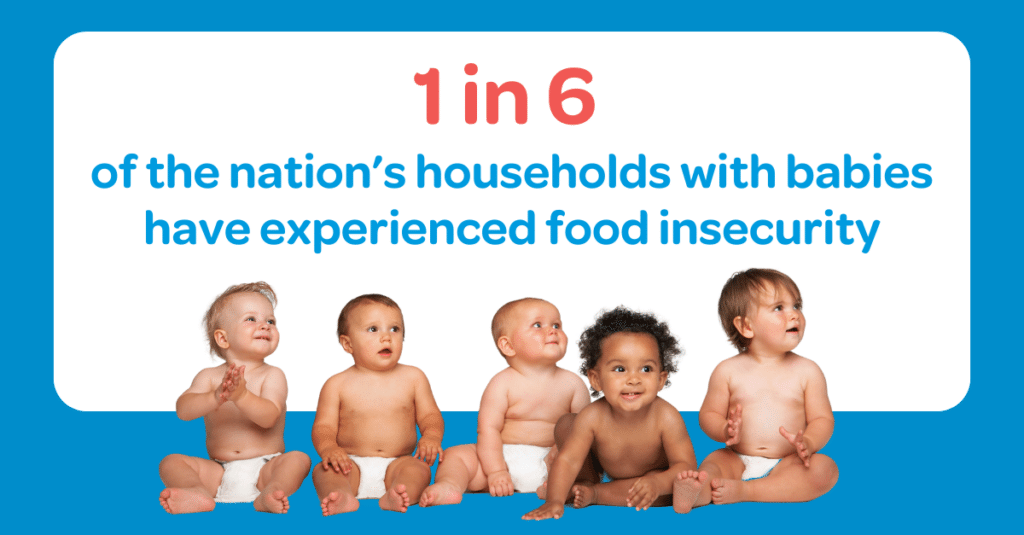What is the ‘care economy’ and why does it matter for babies?

Key Takeaways
- The care economy refers to both the paid and unpaid work of caring for others.
- The care economy is frequently undervalued and underfunded, leading to significant gaps in services and support for those who need it most.
- Affordable and accessible child care is not just a benefit for individual families; it has far-reaching economic implications.
- Paid sick, family and medical leave are essential components of a robust care economy.
- The expanded Child Tax Credit helped reduce child poverty and support the overall economic well-being of families.
What is the care economy?
The care economy is a critical yet often overlooked sector that offers the broad spectrum of paid and unpaid work necessary to support the well-being of people such as children, the elderly, and people with disabilities.
This includes everything from child care and elder care to paid family and medical leave, as well as services that provide skilled care for people in their homes or other settings.
Most people engage in unpaid care work at some point in their lives – such as caring for an elderly parent or taking parental leave with the birth of a child – and some choose to make a career in care. Yet our public policies do not value people for this crucial work. In fact, too often, workers in the care economy are offered low wages and few if any benefits and family members providing care have to give up needed jobs (and paychecks!) to support people they love.
Affordable Infant and Toddler Care: The Economic Impact

One of the most significant components of the care economy is child care. Affordable, accessible, high-quality child care is not just a benefit for individual families; it also has far-reaching economic implications.
Supporting Workforce Participation: When parents, particularly mothers, have access to affordable child care, they are more likely to remain in the workforce. According to the U.S. Department of Labor, the lack of affordable child care is a key factor in why nearly 2 million women left the workforce during the COVID-19 pandemic. Additionally, studies show that reducing child care costs by just 10% could increase the employment rate of mothers by .25% to 11%.
Boosting Economic Productivity: With reliable child care, parents can focus more on their jobs, leading to increased productivity. The U.S. economy lost approximately $122 billion in 2022 due to child care challenges, including lost earnings, productivity, and revenue, up from an estimated $57 billion in 2018.
Valuing the Child Care Workforce: The current child care system is largely balanced on the backs of families and an essential but underpaid workforce.
Long-term Benefits for Children: Quality early childhood education has been shown to have lasting positive effects on children’s development. An analysis by Dr. James Heckman, a Professor of Economics at the University of Chicago, found that children from families with low-income who attended high quality birth-to-five programs were more likely to graduate from high school, hold jobs, and earn higher incomes than children who attended low-quality programs or stayed at home. The estimated return on investment in early childhood education is $13 for every dollar spent, due to the long-term benefits for both individuals and society.
Paid Leave: A Necessary Investment

Paid sick days and paid family and medical leave are essential components of a robust care economy. These policies allow workers to take time off to care for themselves or their loved ones without the fear of losing income or employment.
Healthier Workforce: Paid sick leave, or days a worker may take for short term illnesses, helps prevent the spread of illness, leading to a healthier workforce and reducing overall health care costs. The National Partnership for Women & Families estimates that the U.S. loses $1.3 billion annually in productivity due to workers who come to work sick because they do not have access to paid sick days.
- Benefits to Babies: Maternal paid leave is associated with higher infant brain function at 3 months, as well as with increased maternal and infant physical and mental well-being, including reduced infant mortality.
Employee Retention and Satisfaction: Workers who have access to paid family leave are more likely to stay with their employers, reducing turnover costs. The Institute for Women’s Policy Research found that offering paid leave can reduce employee turnover by up to 20%, saving employers significant costs associated with hiring and training new employees.
Economic Stability for Families: Paid family and medical leave provides families with financial stability during critical times requiring extended absences from work, such as the birth of a child or a serious illness. According to a study by the National Bureau of Economic Research, access to paid leave in California increased mothers’ labor force participation by 6-9% in the year following childbirth.
Paid leave policy is gaining momentum.
The Expanded Child Tax Credit: A Game Changer for Families

The expanded Child Tax Credit (CTC) is avital to the economic well-being of infants, toddlers and their families. By providing families with additional financial resources, the CTC helps reduce child poverty and enables families to buy necessities, secure housing and care, and pay bills.
- Reducing Child Poverty: The expanded CTC included in the American Rescue Plan Act significantly reduced child poverty in 2021. The U.S. Census Bureau estimated that the expanded CTC lifted 2.9 million children out of poverty in 2021, dropping the child poverty rate to its lowest recorded level.
- Stimulating Local Economies: Families receiving the CTC are likely to spend the money on essential goods and services, such as food, housing, and education. The U.S. Congress Joint Economic Committee found that every dollar invested in the expanded CTC generated $1.25 in local economic activity, benefiting small businesses and communities.
- Supporting Workforce Participation: By alleviating some of the financial burdens on families, the CTC allows parents to remain in the workforce, contributing to the economy and reducing the need for other forms of public assistance. Contrary to some expectations, an analysis from the Center on Poverty & Social Policy at Columbia University found that an enhanced CTC did not lead to a dip in workforce participation for those receiving the credit.
Make every vote a vote for babies.


